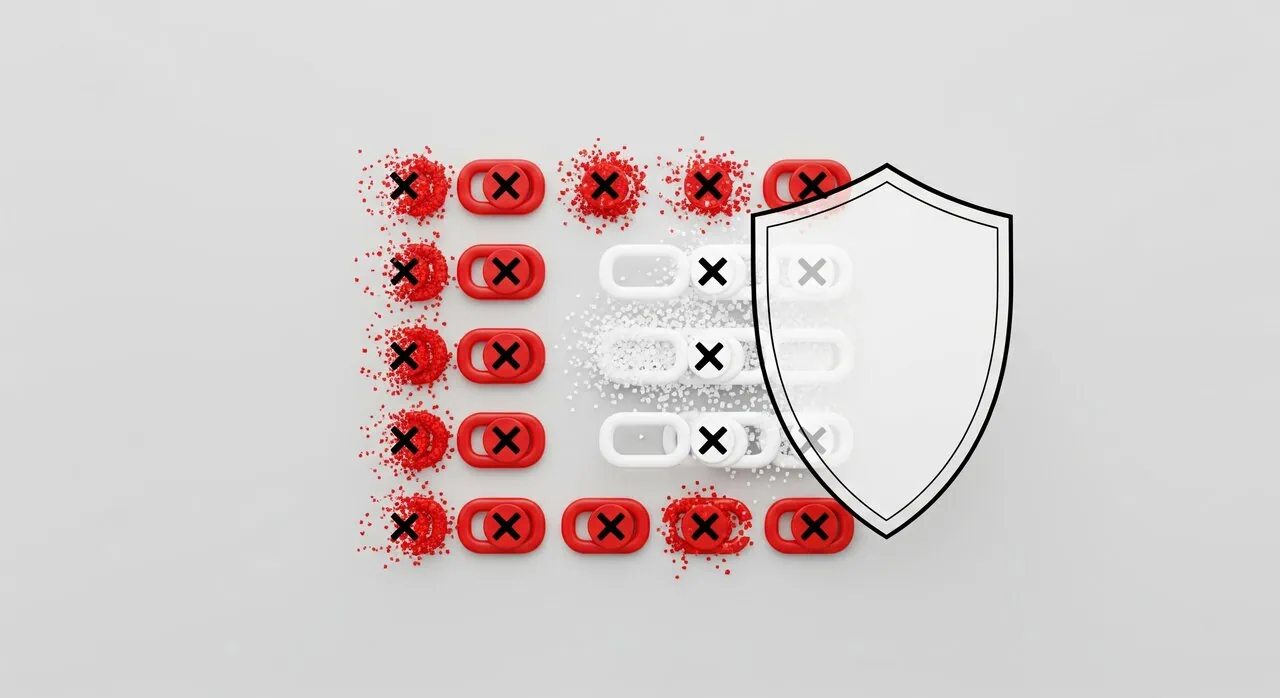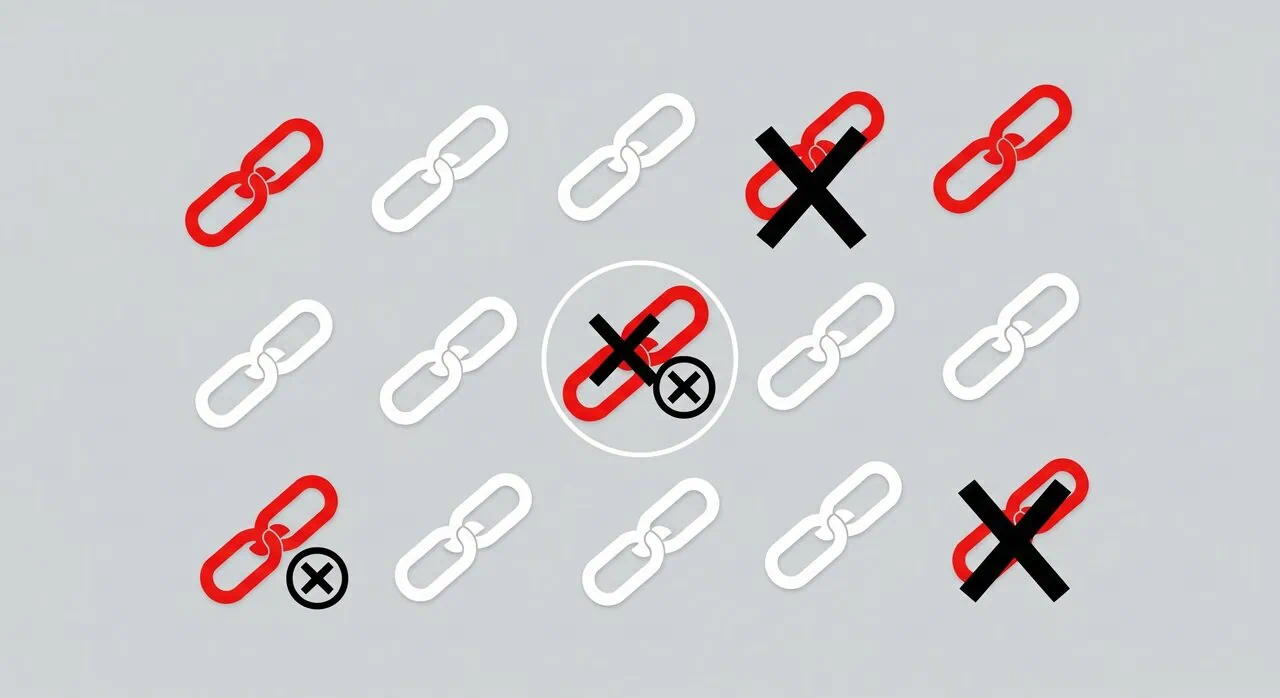You’re watching your traffic dip. Rankings fluctuate. Maybe a Google penalty warning just popped up and you have no clue why. Chances are, someone’s been messing with your backlink profile. Unnatural links. Questionable sites. A toxic SEO footprint you didn’t build. And now, it’s your mess to clean up.
Whether it’s a cheap negative SEO attack or just bad link-building from your past agency, spam backlinks can silently kill your SEO — and fast. The core test? Ask yourself if the linking site actually helps real users or if it’s just a dead, artificial farm built to sell links.
In this guide, you’ll learn:
- What spam backlinks are and where they come from;
- How to spot toxic links in your backlink profile;
- The exact criteria Google uses to evaluate bad links;
- What happens when Google catches spammy patterns;
- Which tools can help you identify and remove them;
- Real-world examples of the worst spam backlinks;
- How to use spam backlinks (the right way — if ever).
Let’s break down how to spot the damage, clean it up, and stay one step ahead before your rankings vanish for good.
What Are Spam Backlinks?
Spam backlinks are links from low-quality, irrelevant, or manipulative sites. They don’t help your SEO — they hurt it by making your site look untrustworthy to Google. You probably didn’t build them yourself. They could be from scrapers, old shady tactics, or even a competitor’s negative SEO.
Here’s what spam backlinks typically look like:
- Links from hacked, adult, casino, or pharma websites;
- Mass link drops in blog comments, forums, or web 2.0 spam;
- Backlinks with exact-match anchors for unrelated or toxic keywords;
- Links from foreign domains with no relevance to your niche;
- Auto-generated pages built just to dump outbound links.
If you’re unsure, just run a scan on your backlink profile and look for these red flags. You’ll be surprised how many spam backlinks examples pop up — even if you’ve never built a single link yourself.
Signs of Spam Backlinks

No, Google won’t send a friendly alert. And by the time traffic drops, it’s already too late. Spam backlinks creep in quietly, and unless you know the signs, they’ll rot your rankings from the inside.
Here’s how to spot the problem before it buries your site:
| Sign | What It Looks Like | Why It Matters |
|---|---|---|
| Sudden backlink spike | 500+ new links overnight, often from unrelated or shady websites | Organic growth doesn’t happen this fast — it screams automation or link spam |
| Rankings slipping for no reason | You’re dropping in Google despite solid content and no site changes | Google may be discounting your authority or flagging your profile as unnatural |
| Manual action in Search Console | Message like “Unnatural links to your site” or a full-blown penalty | That’s Google telling you directly — something’s wrong and you need to fix it now |
| Anchor text looks off | Backlinks with anchors like “buy Viagra,” “cheap loans,” or exact-match keyword spam | It’s a sign of low-quality, manipulative links — especially if repeated |
| Links from unrelated domains | Backlinks from foreign gambling, adult, or hacked websites with no niche overlap | Google sees these as toxic and irrelevant — and may associate your site with them |
| Too many low-authority sources | Tons of links from 0 to 10 DR sites, blog comments, or forum profiles | It waters down your trust score — even if the content looks “okay” at first glance |
Notice any of these? Don’t just sit on it. Fire up a spam backlink checker and start mapping the damage. The sooner you spot the junk, the easier it is to clean it up.
Criterias for Defining Spam Backlinks
Not every bad link looks bad at first glance. Some are subtle. Others are wrapped in clean HTML and polite anchor text. But Google doesn’t care how they look — it cares how they behave.
So, what are spammy backlinks, exactly? Here’s how Google, and experienced SEOs spot them:
- Irrelevant source domain: A link from a cryptocurrency blog pointing to your wedding photography site? That’s not outreach — that’s noise. Google looks for topical relevance, and when it’s missing, that link raises eyebrows.
- Zero authority or link trust: If the linking site has no backlinks of its own, no traffic, and a Domain Rating close to zero, your link from there is basically coming from a ghost town.
- Over-optimized anchor text: When the same exact-match keyword (like “best VPN for Android”) appears across dozens of links, it’s a dead giveaway that you’re trying to manipulate rankings. Natural links don’t repeat anchor text like that.
- Unnatural link velocity: A massive surge of backlinks in a short time — especially from unrelated or low-quality sources — tells Google something shady’s going on.
- Hidden, cloaked, or footer links: Links stuffed in invisible divs, footers, or tiny font sizes? That’s textbook spam. If a human wouldn’t naturally find or click it, it’s not a good link.
- No organic traffic: If the linking site gets zero real traffic it’s a big sign that search engines and users don’t trust it.
- Spammy or stolen content: If a site sells links, scrapes content, or publishes spun junk, any link from it will hurt more than help.
How Google Reacts to Spam Backlinks
Google’s not out to get you, but it is watching. If your backlink profile looks off, the algorithm doesn’t ask questions. It just starts dialing down your rankings.
Here’s what usually goes down:
- Spammy links get ignored, but your site still takes the hit in authority;
- You might get slapped with a manual action, especially if the pattern looks intentional;
- Recovery is slow — even if you fix things, trust takes time to rebuild.
People always ask how to use spam backlinks without consequences. The truth? You don’t. If Google even thinks you’re trying to game the system, you’re already on thin ice.
Tools to Define Spam Backlinks
You don’t need to guess which links are toxic, you just need the right tools. These are the ones that actually help.
| Tool | Description | Limitations |
|---|---|---|
| Google Search Console | Shows who’s linking to you. Great for spotting sketchy domains and any manual actions | Limited data, no spam score or deep link metrics |
| Ahrefs | Gives you a full picture of your backlink profile — spammy anchors, weak domains, the works | Premium pricing; can feel overwhelming at first |
| SEMrush | Flags toxic links, shows link types, and lets you filter by risk level. Clean interface too | Some scores can feel too automated or black-boxed |
| Majestic | Focuses on trust flow. If a site has zero trust, it’s probably garbage | Interface is dated; misses newer or low-volume links |
| Monitor Backlinks | Sends alerts for new links and helps build disavow files fast. Great if you’re cleaning up | Simpler tool, not for deep-dive technical audits |
| Link Detox (LRT) | This one’s built to be a spam backlink checker, it digs deep and doesn’t sugarcoat results | Steep learning curve; can over-flag legitimate links |
| Screaming Frog | Not just for on-site stuff, also handy when you want to check outbound links on shady pages | Requires setup; not backlink-specific out of the box |
Spam Backlinks Examples
Not all bad links are obvious at first glance. But once you see a few patterns, they’re hard to miss.

Here are some classic spam backlinks examples:
- Links from hacked sites or adult content pages;
- Low-effort blog comments with anchor text like “best loans USA”;
- Thousands of profile links from forums you’ve never visited;
- Foreign-language pages that have nothing to do with your niche;
- Web 2.0 dumps or auto-generated sites linking to dozens of unrelated domains;
- Anchors stuffed with exact-match money keywords (“buy steroids online”);
- Paid links disguised as “guest posts” on trashy blogs.
Conclusions
Spam backlinks aren’t always your fault, but they’re definitely your problem. One day your site’s doing fine, the next it’s sinking in search, and you’re left wondering what happened. Bad links don’t come with alarms. They creep in, pile up, and quietly wreck your SEO.
That’s why regular cleanup matters. Run checks, cut the junk, and don’t fall for shortcuts that promise fast results. Real SEO takes patience, and keeping your backlink profile clean is one of the few things you actually can control.
